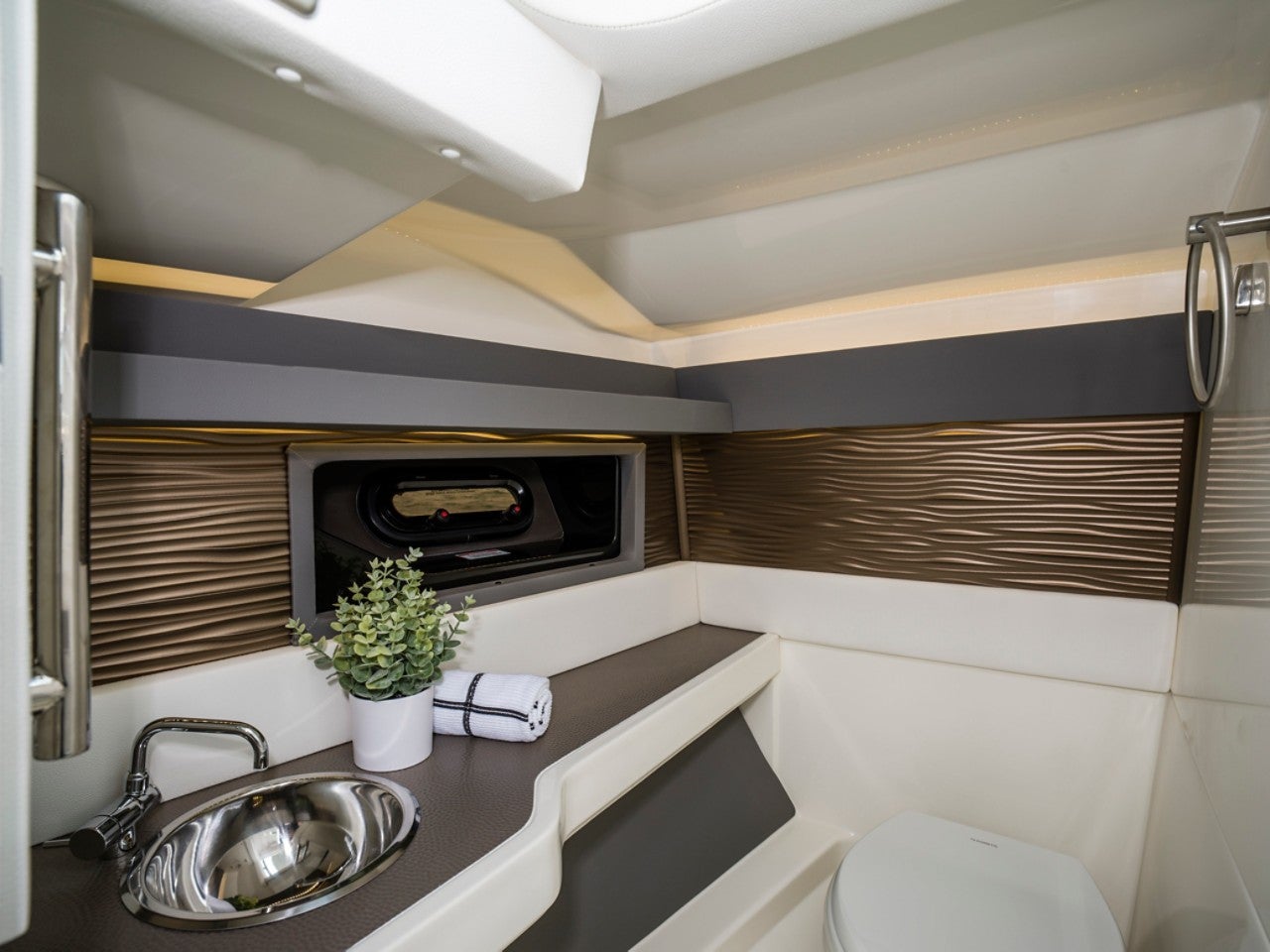Using the toilet on your Sea Ray boat
A day or weekend on the water guarantees the need for a head which is what a toilet on a boat is called. As a responsible boat owner, you need to keep the head in working order and be able to instruct your guests on how to use one as soon as they come aboard.
Head use
Walk everyone through how to use the boat’s head system because it’s not like the toilet back home.
1) Open the water intake through hull and exhaust valves. If your boat empties into a holding tank, the exhaust valve to it will most likely already be open.
2) Be sure your battery switches are powering all systems aboard including head pumps If you have an electric head.
3) Add water the bowl before use. Do your business. Empty the bowl long enough to get it moving through all the plumbing.
4) Remember the anti-siphon loop that’s built into an invisible part of the boat. This is a long loop in the waste exhaust hose that keeps the boat from flooding while allowing waste to exit. Just because it’s out of the bowl, doesn’t mean it’s out of the boat so flush for a while or the plumbing will smell.
5) Most boats will have a holding tank which holds waste until it’s ready to be discharged. That means the waste isn’t going directly overboard and you’ll need to empty the holding tank either three miles offshore or via a designated pump-out at a marina or fuel dock.
6) If you’re working with a manual head, follow the steps above but pump manually – about 5 times to add water to the bowl and again 10-15 times to clear the plumbing after use.
7) If you’re working with an electric head, follow the steps above but use the fill/empty button to clear the bowl after you’ve used it and then the empty-only button to remove excess water. Electric heads draw 20-30 amps each time so make sure your batteries are charged.
8) When done, close the toilet cover because things have a way of going into the bowl on a moving boat.
9) Don’t toss in wipes, paper towels, or feminine care products. Clogs can make a boat completely unlivable due to odor. If it didn’t go through you, it doesn’t go in the head.
10) Use marine safe toilet paper to avoid clogs, such as the Practical Sailor branded toilet paper.
Head cleaning and maintenance
Cleaning your boat’s head system is a project you don’t want to put off.
1) Cleaning the bowl and seat are the same as any household toilet so be sure to do this after every outing.
2) Discard any toilet paper bags or empty the bins.
3) Pump out the holding tank after every trip. There’s usually a fitting on deck where to attach the pump-out hose.
4) Freshen toilets by using a marine additive from EcoStrong or a West Marine private label. Don’t opt for ones that just mask odors but rather ones that contain enzymes or nitrates to break down bacteria and lubricate various moving parts. These chemicals are designed to treat the head as well as the holding tank itself. Add some once you’ve pumped out.
5) You can use white vinegar. Pour a cup in, run or pump the head long enough to move the vinegar out of the bowl but just into the plumbing. Let sit for a few minutes and flush thoroughly.
6) Don’t use bleach that can damage hoses and valves.
7) Even when the plumbing and tank are clean, a sulfuric smell can develop that’s used in salt water. After pumping out, add fresh water to the head and pump through. Fresh water doesn’t contain the same bacteria and will keep the head less odorous. Keep a gallon jug of fresh tap water around for this purpose.
8) Marine heads have moving parts and delicate gear like the joker and flapper valves that need regular maintenance. Keep a repair kit handy for emergencies.
9) Do preventive maintenance in the off season. Check seals, valves, and lubrication.
10) Provide some ventilation for the boat when in storage to keep air circulating.
The above tips are for true marine heads, not portable potties. A toilet on a boat is a convenience and a luxury and with proper handling, you won’t feel like you’re camping – ever.
--
This is for general information purposes only. Your use or reliance on any of the information in this Blog is solely at your own risk. Under no circumstance will we have any liability for any loss or damage of any kind incurred as a result of the use of any of the information provided.
Options and features mentioned subject to change. Please confirm availability of all accessories and equipment with an authorized Sea Ray dealer.
